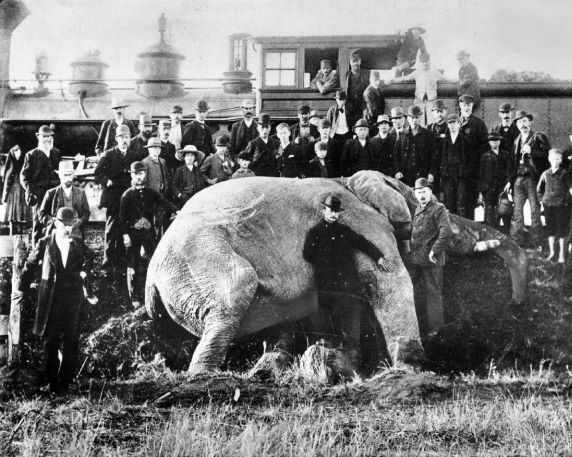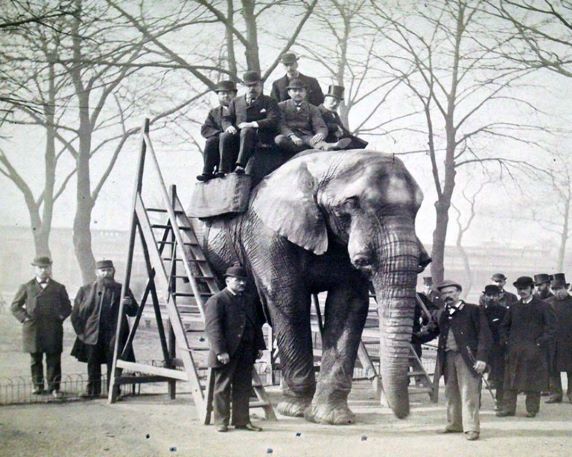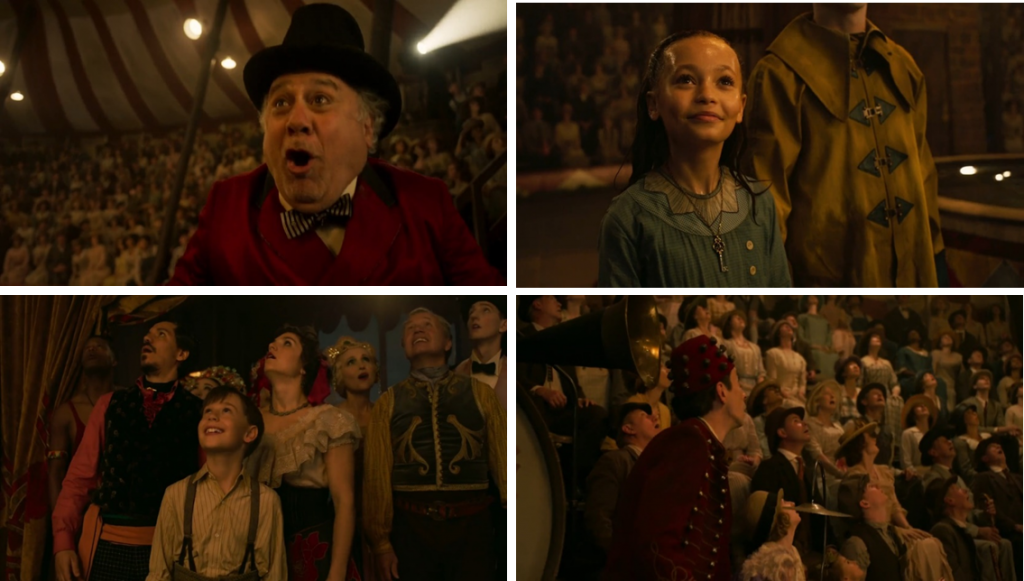“Fly, Dumbo! Fly!”
Did you know that the story of Dumbowas based on a real elephant, Jumbo, in PT Barnum’s circus? While the beloved baby elephant found his happy ever after, the original was not so lucky. Awfully abused and in declining health, at the age of 24, Jumbo was killed by a train when being loaded into his cage, which was carelessly close to the tracks.


Elements of the abuse suffered by Jumbo are demonstrated in Dumbo (2019), particularly in the scene in which he first flies before an audience, as he is raised high on a platform, where he is whimpering in fear.

The elephant is presented using CGI, preventing the use of real animals for human entertainment, which the film criticises. Therefore, the whimpering sound is inserted using Foley, as the animal is not real but the sound must match the CGI. This whimpering evokes sympathy, as the combined image and sound of a frightened baby animal is difficult to withstand, hence creating the audience’s connection to Dumbo’s own emotions.
The elephant is painted with sad-faced clown makeup in order to create a comical act for the circus audience, yet the close-up shot on his face highlights Dumbo’s real grief at his separation from his mother and his fear of that height, reflected in the frowning makeup. In its implicit nature of drawing attention to Dumbo’s emotions, there is irony in the use of the makeup as a disguise for a clown act for entertainment, yet displaying his real sadness. In addressing the use of animals for spectacle, the film highlights the idea of animal emotions and depth, able to feel in a similar capacity to humans. While many already believe animals can feel emotions on the same level as humans, the film emphasises that idea in the portrayal of Dumbo’s consistent sadness throughout the film, elevated to hope at the idea of seeing his mother again. The depth and variety of his emotions convinces audiences of the wrongness of only using animals for show, when human sympathy for Dumbo demonstrates the similarities between the species on an emotional level.
His position as centre of the shot, in the spotlight, marks him as the centre of the show, with the sole purpose of entertaining the human audience. The animal takes the role of the spectacle for human enjoyment, lacking his own agency. While the idea of a flying elephant requires suspension of belief, the physical reality of human entertainment at the expense of animals remains an ethical concern.


When his fall transitions into flight from that height, the perspective shifts from a third person viewing Dumbo at eye-level, to a first person Point-of-view shot from overhead. With that shift in perspective comes a shift in agency. From falling in fear, Dumbo switches to soaring with hope, the majestic nature of which is illustrated through transitioning to a wider shot of Dumbo in the air, his flight caught in the spotlight. The tone shifts from one of melancholy to one of hope, reflected through the extra-diegetic musical composition of Danny Elfman, which is upbeat and parallels the hope of Dumbo in those moments when he, with a smile, flies in hope of seeing his mother again. That there is a change in agency only further highlights the ethical concerns with showcasing animals and frightening them for profit. His fear and hope can be sympathised with by audience members, his agency gained is celebrated, yet he remains trapped. Dumbo soars with hope to see his mother and be free, yet is flying in the enclosed space of the tent, away from his natural environment. He gains mental agency but remains physically confined, thus suffering at the hands of humans.

Here, we see the reactions of the humans to actions of the animal: amazement, pride, wonder, awe. The close-up shots reveal pride from the children who encouraged him to fly (we, as an audience, share this pride for his moment of freedom), and excitement from Medici, who will capitalise on this. The wider shots offer a collective amazement from the audience and crew members, who continue to view Dumbo as a source of entertainment. There is irony in combining hope for Dumbo with the harshness of capitalism, as the circus fuels Dumbo’s hope in order to make him perform. Disney’s use of fantasy in the flight of Dumbo is shadowed by the circus using that magic to generate profit and exploit the animals. This scene is one of wonder and celebration for Dumbo’s agency, yet ultimately those things are used to continue to showcase him as an object rather than a living being with emotions.Dumbo regains his agency in his flight, yet remains a spectacle for the human eye.